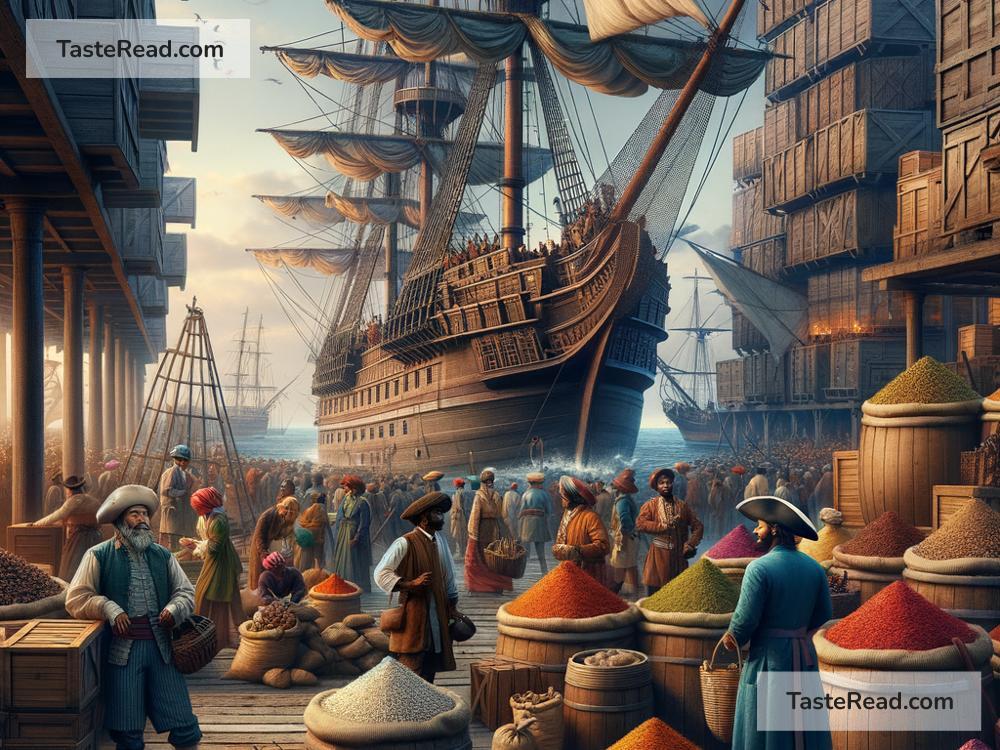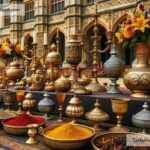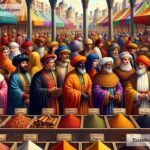How Spices Became Symbols of Exploration
When we think of exploration in history, we often picture adventurers sailing across vast oceans, discovering new lands, and bringing back treasures. But did you know that one of the biggest reasons for exploration was something as simple as spices? These tiny ingredients played a huge role in shaping the world and driving explorers to uncover new territories. Today, let’s dig deeper into how spices became symbols of exploration.
What Are Spices?
Spices are flavorful ingredients used to season food, making it more delicious and aromatic. They come from plant parts such as seeds, bark, roots, or fruits. Common examples include cinnamon, black pepper, cloves, nutmeg, and saffron. For thousands of years, people have used spices not only to make food taste better but also for medicinal purposes, religious rituals, and even as perfumes.
Why Were Spices So Valuable?
In ancient times, spices were incredibly important—and expensive. Back then, refrigerators didn’t exist, so spices were used to preserve food and prevent it from spoiling quickly. They were also used to mask unpleasant odors in food, especially meats.
Moreover, spices had a connection to wealth, luxury, and power. Royals and wealthy families prized spices, and they became a status symbol. If you had a table full of dishes seasoned with rare spices, it meant you were rich and influential. Spices like cinnamon and saffron were worth their weight in gold!
The Spice Trade Begins
Spices didn’t grow everywhere; in fact, many of the most prized spices came from regions far away. For example:
- Black pepper came from India.
- Cinnamon was native to Sri Lanka.
- Nutmeg and cloves originated from the Spice Islands, now part of Indonesia.
- Saffron grew in parts of the Mediterranean.
Because these spices were rare and difficult to find, they were highly sought after. Traders traveled great distances to bring them to markets in Europe, the Middle East, and Asia. This spice trade helped connect parts of the world.
The ancient Silk Road, for instance, was a famous overland trade route that carried spices, silks, and other valuable goods between Asia and Europe. Meanwhile, Arab traders controlled many spice routes by sea, bringing goods from Asia to the Middle East and Europe.
Exploration Fueled by the Desire for Spices
By the 1400s and 1500s, European countries like Portugal, Spain, England, and the Netherlands were desperate to control the lucrative spice trade. They wanted direct access to the spice-growing regions without relying on middlemen or Arab merchants who dominated the trade routes and charged high prices. This desire for spices became one of the major reasons for global exploration.
One of the most famous early explorers was Christopher Columbus. In 1492, he set out on a journey to find a direct route to Asia, the land of spices. Instead, he accidentally landed in the Americas. While he didn’t find the spices he was looking for, his voyage opened the door to the colonization of the New World.
Meanwhile, Vasco da Gama, a Portuguese explorer, became the first European to reach India by sea in 1498. His successful journey established a new trade route to Asia and made Portugal a major player in the spice trade.
The Spice Islands: A Key Destination
Out of all the spice-growing regions, the tiny islands of Indonesia—known as the Spice Islands—became one of the most important destinations for explorers. These islands were the only source of nutmeg and cloves for many centuries. European powers fought fiercely to control them.
The Dutch eventually took control of the Spice Islands, using brutal tactics to dominate the market. This competition for spices led to wars, colonization, and changes in global power dynamics.
Spices Change the World
Exploration driven by spices didn’t just bring these flavorful ingredients to Europe—it changed the world forever. The interactions prompted by the spice trade led to:
- Cultural Exchange: Different countries learned about each other’s traditions, food, and inventions.
- Globalization: Goods, ideas, and people traveled across continents like never before.
- Colonization: European powers established colonies in Asia, Africa, and the Americas, which shaped history in complex and sometimes painful ways.
Spices Today
Today, spices are within everyone’s reach. You can find them in supermarkets and use them in your cooking without thinking about how rare they once were. But spices still carry a rich history of exploration, adventure, and connection between worlds.
Whenever you sprinkle cinnamon on your coffee, or grind some black pepper onto your food, remember that these little ingredients were once as precious as gold. They fueled bold journeys across oceans and inspired ambitious explorers to uncover hidden corners of the globe.
Conclusion
Spices were more than just flavorful ingredients—they were symbols of adventure and exploration. They drove fearless explorers to sail across dangerous seas, changed the course of history, and connected cultures in ways that still shape the world today. So next time you’re in the kitchen, think about how your favorite spices represent centuries of discovery, trade, and bravery.


